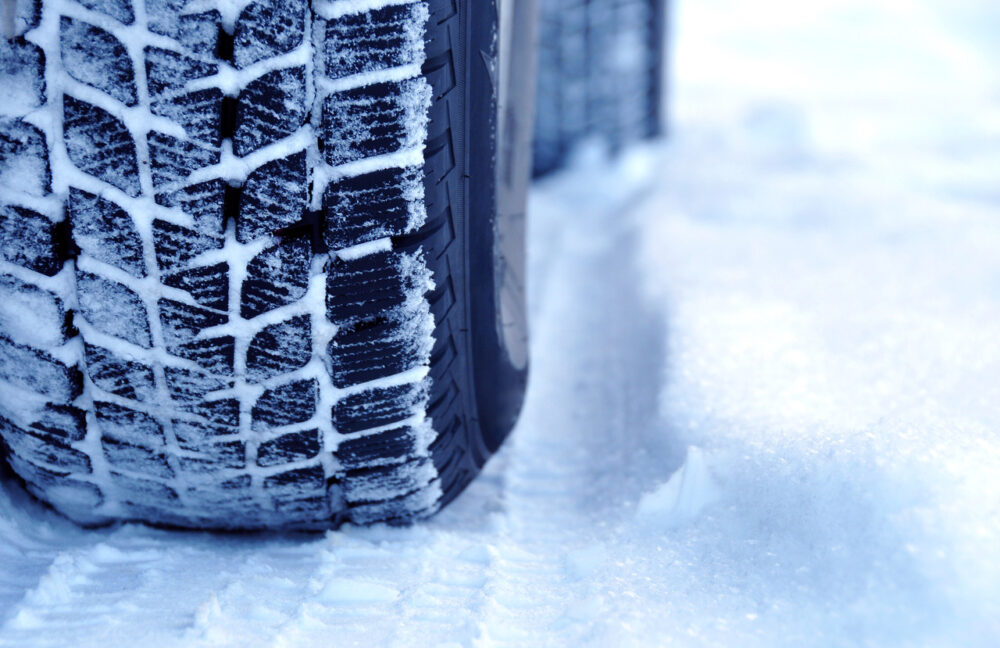 With seasonal changes underway and temperatures beginning to fall, now is the time to check your fuel infrastructure to prevent common issues and keep your equipment running smoothly throughout the winter months.
With seasonal changes underway and temperatures beginning to fall, now is the time to check your fuel infrastructure to prevent common issues and keep your equipment running smoothly throughout the winter months.
Five simple steps will help ensure trouble-free fuel performance this winter, says Pete Probst, president of Indigenous Energy, an Affiliated Partner of the B20 Club of Illinois.
1. Measure cold-weather operability. Diesel fuel performance in cold weather can vary based on crude oil source and how the fuel has been refined and blended. The cold-flow properties of biodiesel can depend on the feedstocks used for its production.
Whether you run on biodiesel or standard No. 2 diesel fuel (ULSD), two cold-flow measurements are critical: cloud point (CP) and cold filter plugging point (CFPP). CP is the temperature at which wax crystals first appear in the fuel, making it appear cloudy or hazy. CFPP is the temperature at which larger wax crystals form and start to plug the fuel filter.
“CFPP generally indicates the lowest temperature a vehicle can operate before experiencing gelling issues with the fuel,” Probst says. “To help prevent these issues, fleet operators should ensure that the CFPP of their fuel is above expected wintertime low temperatures in their area. A good first step is to ask your fuel supplier for assistance in testing your fuel before winter begins.”
To test cold-flow characteristics, Indigenous Energy collected fuel samples from hundreds of retail stations in Illinois and Indiana. An analysis performed by a third-party lab found that the CP and CFPP results were similar for biodiesel blends up to B20 and standard ULSD, indicating drivers could expect similar wintertime performance.
2. Use winter fuel additives. Regardless of the fuel you are using, it’s important to winterize fuel to withstand expected low temperatures in your area. “Additives help lower the CFPP and improve the flow of both ULSD and biodiesel blends during freezing temperatures,” Probst says. “We recommend working with your fuel supplier to first test your fuel and then determine your additive needs and establish an implementation schedule based on current and projected temperatures. This will help to ensure that your fuel is properly additized to prevent common gelling issues with ULSD or biodiesel blends.”
Probst notes that drivers traditionally have added No. 1 diesel, or kerosene, to diesel or biodiesel blends to improve cold weather operability. However, kerosene has a lower BTU value than diesel and can reduce fuel economy. “Additives are generally less expensive and perform just as well as kerosene,” he says, “That’s an important advancement that can save fleets hundreds, if not thousands, in added costs by reducing or eliminating the need to use kerosene.”
3. Check for contaminants. Whether you run biodiesel blends or ULSD, fleets should check their storage tanks for water or other contaminants. Water is the most common source of fuel filter plugging issues in diesel engines during winter. When temperatures fall below 32 degrees F, excess water in the tank can freeze and block fuel flow through the filter.
“A Bacon Bomb device is an easy and inexpensive way to retrieve a fuel sample from the tank bottom, where free water and sediment settle. You can purchase your own Bacon Bomb for sampling or ask your fuel supplier to provide this service,” Probst says.
Place the fuel sample in a clear plastic or glass jar to inspect for water and sediment. The fuel should be clear and bright. Hazy fuel indicates water contamination. If you detect water, take steps to clean and remove it, or consider a deicer to keep the water suspended and moving through the system during cold weather.
4. Be aware of microbial growth. Water in the tank also leads to microbial growth.
“Microbial contamination has become more common since the introduction of ultra-low sulfur diesel (ULSD) fuel in 2006. Prior to ULSD, the high sulfur content in diesel fuel acted as a natural antimicrobial agent,” Probst says.
If inspection shows water in your storage tank, Probst advises working with your fuel supplier to test for microbes. Biocides are available to treat contaminated tanks. In severe cases, the tank should be drained and cleaned.
5. Keep water out of the tank. Take these steps to prevent water from entering your fuel tank in the first place. For example:
- Top off tanks to eliminate air space that could foster condensation when temperatures change.
- Keep fuel caps tight to keep water from entering the tank.
- Inspect hoses and gaskets for leaks.
- Keep underground storage tank sump pits and fill connection spill containers clean and dry.
“Cold weather performance issues are sometimes falsely blamed on biodiesel blends. In truth, all diesel fuels require maintenance steps in winter. Remember, biodiesel is an all-weather fuel with high performance year-round. With proper maintenance and basic housekeeping practices, you can expect a problem-free experience from ULSD or biodiesel blends up to B20,” says Probst.
About Indigenous Energy: Indigenous Energy is a renewable energy consulting firm that works with stakeholders to promote and use more biodiesel. Biodiesel is the best option to reduce carbon emissions in the mid to heavy-duty sector of transportation. It is readily available and works with pre-existing vehicles and infrastructure. Learn more at Indigenous-Energy.com.
About the B20 Club of Illinois: A partnership between the Illinois Soybean Association checkoff program and the American Lung Association, the B20 Club recognizes a select group of Illinois-based organizations with strong commitments to run fleets on biodiesel blends of 20 percent or greater. Since 2014, B20 Club members have consumed nearly 30 million gallons of B20 and higher biodiesel blends, contributing to cleaner air and more sustainable operations throughout Illinois. Learn more at B20club.org.
About Biodiesel: Made from an increasingly diverse mix of resources such as recycled cooking oil, soybean oil and distillers corn oil, biodiesel and renewable diesel are better, cleaner fuels that are available now for use in existing diesel engines without modification. These low-carbon, low-cost fuels are helping to reduce emissions today from trucks, buses, emergency vehicles and large equipment. Both are derived from renewable feedstocks and their use does not typically require expensive investments in refueling or recharging infrastructure. The market for these fuels has grown as the U.S. consumed about 3 billion gallons of biobased diesel fuel in 2020 and the market is set to double by 2030.
Adapted from “Biodiesel Specialist Shares Five Steps to Better Cold Weather Fuel Performance,” published by the Illinois Soybean Association in November 2018. Learn more about the Illinois Soybean Association and its biodiesel programs at ilsoy.org.



